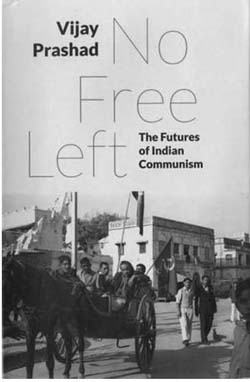The recent right turn in Indian politics has left the Left parties in a lurch. The 2014 Lok Sabha election electorally devastated the entire Left, particularly the Communist Party of India-Marxist. Vijay Prashad’s No Free Left: The Futures of Indian Communism examines the existential crisis faced by the Left parties in India given the formidable challenge from the Right, especially from the dizzying electoral success of the Bharatiya Janata Party in the 2014 Lok Sabha polls.
September 2015, volume 39, No 9


Wow, incredible weblog format! How long have you ever been running
a blog for? you made running a blog glance easy.
The whole look of your web site is great, as well as the content!
You can see similar here sklep internetowy
I think this is among the such a lot significant info for me.
And i’m happy reading your article. However should remark on some common things, The website style is wonderful, the articles is
in reality nice : D. Excellent process, cheers I saw similar here: Sklep
I am not sure where you’re getting your info, but good topic.
I needs to spend some time learning much more or understanding more.
Thanks for excellent info I was looking for this info for my mission.
I saw similar here: E-commerce
Hey! Do you know if they make any plugins to help with SEO?
I’m trying to get my blog to rank for some targeted keywords but I’m not seeing very good gains.
If you know of any please share. Thanks! You can read similar
art here: Dobry sklep
It’s very interesting! If you need help, look here: ARA Agency
Howdy! Do you know if they make any plugins to help with
SEO? I’m trying to get my blog to rank for some targeted keywords
but I’m not seeing very good results. If you know of any please
share. Appreciate it! You can read similar text here: Hitman.agency